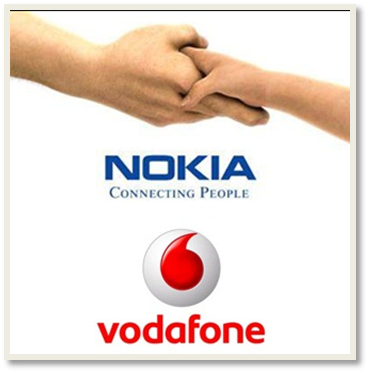Lag is near-universal pain for all gamers. Each gamer around the world has experienced gaming lag at least once in their lifetime, which can be quite frustrating. However, innovative solutions are emerging to address this concern- with Nokia and Vodafone leading the way with their latest experiment.
The Experiment:
On 3rd April, Nokia and Vodafone conducted world’s first trial of L4S technology. L4S technology, which stands for Low-Latency, Low-Loss, Scalable Throughput, is a newly designed internet standard pioneered by Nokia Bell Labs. The revolutionary technology provides high downloading speeds with low latency. This is in contrast with the current internet technologies- as companies have prioritized one aspect over the other. High speed internet connection offers high throughput, meaning high downloading speeds, but struggles to eliminate lag. Conversely, low-latency solutions struggle with overall data transfer rates.

L4S technology has found a middle ground between the two challenges and is ready to offer cutting edge internet speed with little to no lag experience. This can be groundbreaking for one of the largest industries globally- the gaming industry.
The global gaming industry is the powerhouse of entertainment for the billions of users worldwide. The industry generates $200-$300 in revenue each year. By 2030, gaming industry is expected to be double its current size. However, in terms of technical performance and smooth gameplay, the issue of lag is the most pressing issue for the global gaming industry.
Lag, or technically referred to as latency, is the delay in user’s action and device’s response.

A Pocket Gamer Biz Survey in 2018 identified that 99% of the respondents experienced lag during gameplay, out of which 35% of the players quit the game and 56% blamed game developer for the lag. Some of the users also migrated to competitive games for smoother gameplay.
Another survey by Nvida GeForce Experience Survey of over 50,000 gamers worldwide identified that 70% of the respondents identified lag as the major source of their frustration.
This not only ruins user experience with the game, but also dents developer’s reputation and brand image.
Thus the experiment was aimed at identifying the potential of L4S to improve internet experiences of users during video calls and heavy gaming. The experiment utilized Passive Optical Network (PON), which is like a centralized hub for providing internet connection to users- but uses single optical fibre cable for providing internet to multiple users, instead of using separate optical fibre cables for each user. This type of network connection is not only cost effective but also allows easy scalability by simply adding new users to the splitter.
On PON, conditions of ‘busy WiFi’ connection, with lag of 550ms, were simulated to test L4S technology. Nokia Bell Labs and Vodafone's Fixed Access Center of Excellence collaborated on the project.
The Experiment was Successful and Offered Following Results:
- Latency with Wi-Fi went from 550 milliseconds (ms) to mere 12 ms.
- Latency rates were further brought down to 1.05ms when using Ethernet cable connection. For reference, 4G internet connection has a latency rate of 60ms to 98 ms, whereas 2G connection offers latency rate of 300-600ms. For smooth gaming experience, a lag of 40 ms or below is desired.
The Impact of L4S Technology on Gaming Industry:
Globally, more than 3.26 people play video games. For these gamers, latency is the bane, which is the most significant advantage offered by the L4S technology. Apart from this, it also offers faster download speed, cloud support, and reduce queue delay issues while playing online games.
Nokia-Vodafone partnership benefits the global telecom industry:
Last year, under the joint partnership of Vodafone and Nokia, a commercial 5G open Radio Access Network pilot was tested in Italy. RAN is a network architecture with open interfaces, which allows different equipment from different vendors to work together.
The network is pioneered by Vodafone, which will lead to cost efficiency, and customer focused network generation in the future.
Researchers around the world are also developing techniques to successfully embed these communication standards into 5G technology. With this partnership, Nokia and Vodafone are working to commercialize restricted RAN architecture. Providing Open Radio Access network, which connects our mobile phones with the cloud servers, means access to inter operable equipment and cost saving.
Conclusion:
The successful experiment of L4S technology has the potential to change gaming industry by addressing the most pressing issue of gamers around the world. The benefits of the technology are, however, not limited to gaming industry. It improves the overall video call quality and paves way for cloud gaming as well.
All in all, the technology paints a promising future, but there are also concerns around user data privacy and large scale implementation since the technology has only been tested in simulated situations. So, configuring the existing infrastructures with L4S can be challenging in its initial phase. Scientists in Nokia Bell Labs are currently addressing these challenges to make L4S technologies accessible to all.
*READ MORE:- AI In Healthcare Is The Blend Of Innovation And Ethics
Copyright © 2025 getessayservice.com
